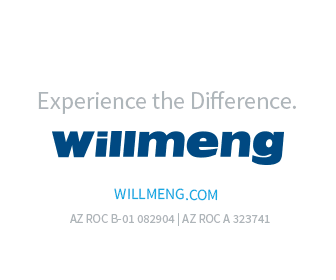The Future of Parking is in (Almost) Everyone's Hands

Mobile parking apps can help owners manage costs while boosting convenience for customers.
According to statistics from Sensor Tower, a provider of market intelligence and insights for the global app economy, there were more than 3.4 million apps available across the App Store and Google Play in 2018. That’s an increase of 65% from 2014.
As more consumers use their smartphones to shop online, secure and convenient mobile payments through apps have become the norm. Apps like Waze that help people with directions are also widely accepted.
But along with this simplicity and ubiquity comes another predictable consumer behavior: expectation. Consumers, especially younger ones, assume that they can use their smartphones for almost anything, almost anywhere. Parking management provides a case study of this phenomenon in real time.
The public tends to associate mobile parking payment with on-street city parking. However, the technology isn’t just useful for municipal parking in urban areas. Increasingly, private lots and garages are incorporating mobile payment technology. By offering patrons the option to pay for a spot through an app, the driver enjoys a convenient experience that encourages them to use that lot or garage again in the future.
And for developers and building owners who rely on parking to generate revenue, returning customers are the name of the game. According to a 2017 article in the New York Times, Frost & Sullivan research indicates that parking apps track more than 57 million spaces in the U.S. and Europe, and the apps are used by 30 million people. Both of those numbers are almost certainly much higher today.
Mobile payment technology also gives developers and owners of private garages and lots a powerful management and enforcement tool.
How it Works
Convenience is key with most smartphone technologies, and mobile parking payments are no different. Everything needs to be fast, easy to access and unobtrusive. Drivers would rather pay for parking, or manage their parking permits, from the comfort of their vehicles. Mobile parking eliminates the hassles traditionally associated with parking payments.
Once a driver parks, they open an app, estimate how long they need to stay and pay the predetermined rate via a credit card linked to the app. This information is transmitted to the system so that the facility’s staff knows the car is supposed to be there and for how long. When the driver’s parking session is expiring, the driver even has the option to extend the time — all without having to run back to a meter to drop in additional coins.
Mobile payment is popular among owners with private parking lots and garages. The technology provides a simple, easy-to-manage alternative to traditional parking management equipment and strategies, because the app’s servers handle all the identification and payment information remotely.
Additional equipment isn’t required.
Even owners who aren’t relying on their parking resources to generate revenue can benefit from mobile payment technology. The apps can efficiently manage permit parking, eliminating the need for stickers or RFID transponders. Removing those costs can save owners thousands of dollars.
Additionally, there is often little or no cost for parking operators to offer apps. New signage may be needed for the parkers, and there is a short setup time. Since there is no hardware to buy and no software to license, most new parking operators can be set up in as little as four to six weeks.
Customers who must prove that they are authorized to park in a lot or garage can do so quickly and conveniently through an app. Since parkers typically enter payment or permit credentials when they initiate a transaction, the technology can simply keep the parking spots available to anyone who has the proper digital authorization. When unauthorized parkers are identified, enforcement officials are alerted to give a warning, ticket or a full tow.
One of the less obvious advantages of a mobile payment option is the reduction in some long-term costs associated with managing the parking facility. The more patrons use their phones to pay for parking, the less they use optional payment and revenue-control equipment or pay-on-foot kiosks. Less wear and tear on this equipment reduces the need to repair it when it breaks down or replace it when it’s no longer serviceable. This can save owners thousands of dollars each year that they can use for other development or property-management priorities.
Everybody Wins
Mobile payment has the potential to provide notable benefits to developers, owners and their customers. Owners get to cut long-term costs, and the patrons get an experience that makes them want to use that parking facility again in the future.
By significantly improving the parking experience, mobile payment also provides the incentive for parkers to become repeat customers.
Adam Kriegel is the vice president, East for PayByPhone.







